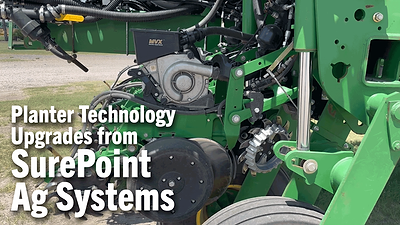With the slump in commodity prices over the past 24 months, and increasing overall price volatility for farm products, Cole Carling says many farmers are looking for ways to stabilize their income and are searching for new enterprises to spread out their financial risks.
Carling, North American hay and forage marketing manager for Case IH, says price volatility is driving producers to look at hay and forage as a supplement to cash row crops, a fact that offers farm equipment dealers opportunities to expand their business and improve their own bottom lines.
Carling grew up on a 3,000 acre alfalfa hay operation in Utah and after college worked in a large farm equipment dealership in customer sales and service support. Today, overseeing the Case IH hay and forage efforts throughout the U.S. and Canada, he says growers are looking to improve return on investment and avoid the whipsaw of market fluctuations.
“As farm prices dropped, we noticed growers’ interest in producing crops other than corn, beans, wheat and canola rising,” he explains. “They’re asking, ‘What options do I have to increase revenue?’
“We had a large square baler at the Hay & Forage Expo in Boone, Iowa, in June, and growers from Kansas to South Dakota and Minnesota were looking at it, expressing interest in getting into the hay business,” Carling says. “Several had planted alfalfa under pivots this spring, purchased hay equipment and already had contracts with dairies to buy their feed.”
“Growers are looking for ways to improve their bottom line using the land and resources they have, and many are realizing hay and forage is a more stable business than a farm based strictly on cash grain. Livestock and livestock feeding (dairy and beef) have their ups and downs, but in general they are much less prone to the extreme high-low swings of grain markets,” he explains.
Also, Carling says the hay and forage market itself is becoming more sophisticated, particularly as exporters and other end-users of alfalfa hay demand top quality feed value in the bales they buy. This evolution has fueled demand for equipment that preserves feed value through gentle haying operations that reduce dirt, rocks and other trash in the baled or bagged product.
Dealer Opportunities
“Many dealers who have traditionally built their business selling tractors, harvesters and tillage equipment are reluctant to handle hay and forage equipment because they are unfamiliar with it,” Carling explains. “What they’re missing, in addition to sales and service of new and used tools for the hay meadow, is the repeat business such equipment generates in the sales of twine, knives, belts and other supplies.
“Every time a customer comes into a dealership to buy consumables, there are sales opportunities and a chance to further build relationships — and relationships are what sells equipment and shop time,” he adds.
“Also, with traditional row-crop farming, there’s essentially one harvest. A dairy hay producer is harvesting every 28 days,” Carling says. “That means dealerships need to have knowledgeable technicians on staff who are familiar with haying equipment, and who have a basic understanding of the end use of various hay and forage products.
“When a hay producer needs something fixed, he needs it now, because there’s a lot of money at stake in weathered hay,” he explains.
Carling says hay and forage equipment customers are looking for a “consultant relationship” with their dealers, and the more a dealer can guide equipment purchases based on an individual customer’s needs, the more valuable that relationship becomes to both parties.
Having a basic understanding of hay and forage use and production allows dealers to ask the proper questions when someone wants to start a new hay enterprise on their farm.
General discussion points when talking with your customers:
- What crops can you grow in your area? Who or what is the market for the crop you want to produce?
- What are you going to do with the crop? Will you be feeding it to your own animals or selling it?
- If you’re selling it, do your customers have the equipment to handle the bales, which can range from an 80 pound small square to a 2,000 pound large round bale?
- How will the bales be stored? Large square bales are easier to stack.
- Round balers require tractors with 60-105 horsepower; large squares need from 120-175 horsepower.
- Are you familiar with your area’s highway regulations? Certain areas have width restrictions that can affect the number and size of bales in transport.
“These questions will help assure a new customer the dealer is truly interested in serving their needs, not just trying to peddle current inventory with an attitude of ‘take it or leave it.’”






